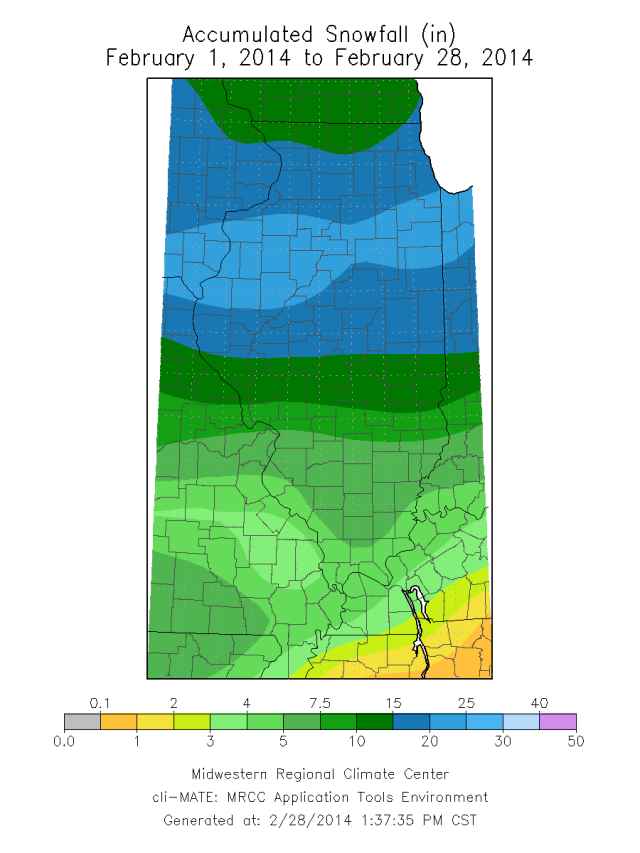I have received several questions about whether or not this winter is an indicator of the upcoming growing season. The good news is that, at least historically, a harsh winter is not followed by a harsh summer.
Analysis
The statewide average temperature for the three core winter months of December, January, and February was 20.8 degrees. That was 8.2 degrees below average and the fourth coldest December-February period on record. Here is how it compared with some other cold winters in Illinois.
| Rank | Year | Avg. |
| 1 | 1977-1978 | 19.6 |
| 2 | 1978-1979 | 19.9 |
| 3 | 1935-1936 | 20.6 |
| 4 | 1917-1918 | 20.8 |
| 4 | 1976-1977 | 20.8 |
| 4 | 2013-2014 | 20.8 |
By the way, the 1981-2010 statewide average is 29.0 degrees.
So what followed after these harsh winters? We will look at the winters of the late 1970s first. The plot below shows the monthly temperature departures from average for Illinois. After the first of the three harsh winters, we had a remarkably warm spring in 1977, followed by summer and fall temperatures close to average. The temperatures in 1978 and 1979 were even closer to average. Not shown here, but the precipitation during the growing season of those three years was close to average as well. Overall, the growing seasons were unremarkable in both temperature and precipitation.
Here is the same analysis (plot below) for the two other harsh winters in the list: 1918 and 1936. The interesting thing about 1918 as the persistent alternation between warmer- and colder-than-average conditions from one month to the next. Precipitation for 1918 was one inch below average. Of course, 1936 is infamous for both the drought and heat that summer. That is clearly seen in the July, August, and September temperatures on the graph.
So of the five harsh winters in the analysis, we have only one case of a following summer showing harsh conditions. Another analysis I did offline with winter and summer temperatures showed zero correlation between the two.








